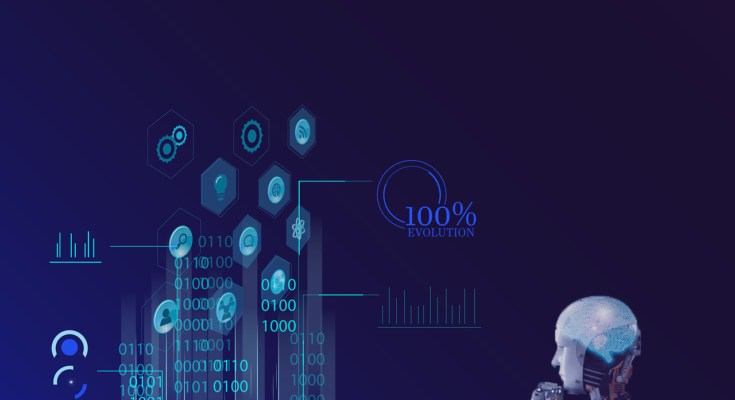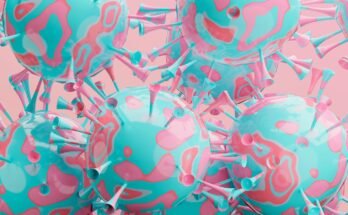Introduction to Claude 3.5: A New Era in AI Creativity
In the realm of artificial intelligence, Claude 3.5 represents a notable advancement in the journey of AI language models. Developed by Anthropic, Claude 3.5 is meticulously engineered to not only understand but also enhance human creativity, particularly in the domain of writing. This sophisticated model exemplifies a convergence of technology and art, aiming to assist users in generating expressive and stylistically complex written content. As the latest iteration in the Claude series, it demonstrates significant improvements in linguistic capabilities compared to its predecessors.

The ability to generate poetic forms, especially haikus and sonnets, sets Claude 3.5 apart from other AI models. Haikus, characterized by their concise structure and focus on nature, and sonnets, known for their intricate rhyme schemes and emotional depth, have long been celebrated in literary traditions. By harnessing the power of Claude 3.5, writers and poets can explore novel approaches to these classic forms, pushing the boundaries of poetic expression. The AI’s proficiency in recognizing thematic elements and crafting rhythmically pleasing lines opens up exciting opportunities for both seasoned poets and those new to the craft.
Moreover, the potential for AI-generated poetry raises important discussions about the future of creative writing. Can machines truly understand the nuances of human emotion and creativity? With Claude 3.5, users are invited to engage in a dialogue with technology, exploring how AI can serve as a collaborator in the writing process. This interaction not only enriches the artistic landscape but also prompts us to reconsider our definitions of creativity. As we delve into specific examples of haikus and sonnets crafted by Claude 3.5 in later sections, we will witness firsthand the unique contributions this advanced model makes to the art of poetry.
The Haiku: Crafting Nature Through AI
Haikus, a traditional form of Japanese poetry, capture profound moments in nature through a concise structure. Typically structured in a 5-7-5 syllabic pattern, a haiku encapsulates imagery, emotion, and a sense of time within just three lines. Each haiku highlights the beauty and transience of the natural world, often reflecting on the changing seasons or fleeting moments that evoke a deep emotional response. This poetic form serves not only as an artistic endeavor but also as a means of connecting the reader with the essence of their environment.

Claude 3.5, an innovative AI tool, is capable of generating haikus that resonate closely with the traditional themes of this poetic form. By utilizing advanced algorithms, Claude 3.5 crafts haikus that showcase vivid imagery and encapsulate raw emotions associated with specific moments in nature. For instance, a generated haiku might depict the gentle rustle of leaves in the wind, instilling a sense of peace or nostalgia in the reader. Through concise language, the AI captures the fleeting experiences that often go unnoticed, presenting them in a manner that highlights their significance.
Beyond the technical aspects, the cultural significance of haikus warrants exploration. Traditionally, haikus seek to capture a singular moment and invoke a deeper understanding of our connection to nature. Claude 3.5’s interpretation aligns with these traditions in many ways, yet it also challenges them by introducing a modern lens through which to view nature. This interplay between AI-generated haikus and conventional practices opens a dialogue on the evolution of poetry in our technologically driven world. As we delve into these artistically crafted pieces, we begin to appreciate how AI can both respect and reshape the narrative of traditional haiku artistry.
The Sonnet: Elevating Emotion and Narrative with AI

The sonnet, a poetic form with rich historical roots, has captivated audiences for centuries. Traditionally characterized by its 14 lines, the sonnet serves as a powerful vehicle for expressing complex emotional narratives. Its enduring appeal lies in its structured form, which often incorporates a specific rhyme scheme and meter, particularly the iambic pentameter. This rhythmic pattern, whereby each line consists of ten syllables following an unstressed-stressed sequence, enhances the lyrical quality of the poem, allowing for an intricate exploration of themes such as love, conflict, and contemplation.
In our exploration of AI-generated poetry, we turn our attention to the specific sonnet crafted by Claude 3.5. This particular piece exemplifies the delicate balance between tradition and innovation in poetic composition. The rhyme scheme employed mirrors the classic structure, providing an anchor that appeals to those familiar with sonnet conventions. Through its lines, readers are invited to navigate a landscape of emotion, as the AI adeptly engages with the nuances of human feeling. The thematic depth present in this sonnet reflects not just the technicality of the form but also an understanding of emotional experiences, showcasing AI’s growing proficiency in capturing the human condition.
AI’s role in this process is intriguing; it allows for the reiteration and reimagining of established poetic frameworks while injecting new perspectives. The ability of Claude 3.5 to produce sonnets that resonate on an emotional level poses questions regarding the boundaries of creativity and the future of poetic expression. By complementing traditional forms, AI enhances the collaborative potential between technology and human artistry. As we move forward in the realm of literature, the intersection of human emotion and artificial intelligence invites a broader dialogue about the essence of creativity itself.
Conclusions: The Future of AI in Poetry
The exploration of AI in poetry, particularly through Claude 3.5, has raised significant questions and insights regarding the future of creative writing. As AI continues to advance, it is reshaping the landscape of literary expression. The capacity of AI to generate haikus and sonnets illustrates the potential for artificial intelligence not only to mimic human creativity but also to contribute a unique perspective to traditional poetic forms. This raises important discussions about the authenticity of AI-generated works and their place in the literary canon.

One of the key considerations involves the nature of collaboration between human poets and AI systems. While Claude 3.5 can produce poetry that resonates on multiple levels, it also prompts us to think critically about the value of the human touch in creative processes. How does the involvement of AI affect the emotional depth and personal nuance often found in poetry? This inquiry encourages poets and enthusiasts alike to re-evaluate their connection to artistic expression, contemplating what it means to be a creator in an age where machines can replicate certain aspects of our craft.
Moreover, as we navigate the evolving terrain of poetry in a digital environment, we are bound to witness a transformation in poetic forms themselves. AI-generated poetry holds the potential for innovation, crafting new styles and structures that may defy traditional conventions. However, it is also essential to recognize the limitations of AI, which lacks the experiential understanding of human emotions and contexts that often elevate poetry. Therefore, it becomes imperative for readers and writers to reflect on their experiences with AI-generated poetry, weighing its possibilities against its shortcomings.
Ultimately, the journey of integrating AI into poetic creation is just beginning. As we continue to explore its capabilities, there exists great potential for enrichment in the arts. The dialogue surrounding AI in poetry will undoubtedly challenge our perceptions and invite further inquiry, ensuring that the future of this field remains vibrant and inclusive of diverse artistic expressions.





